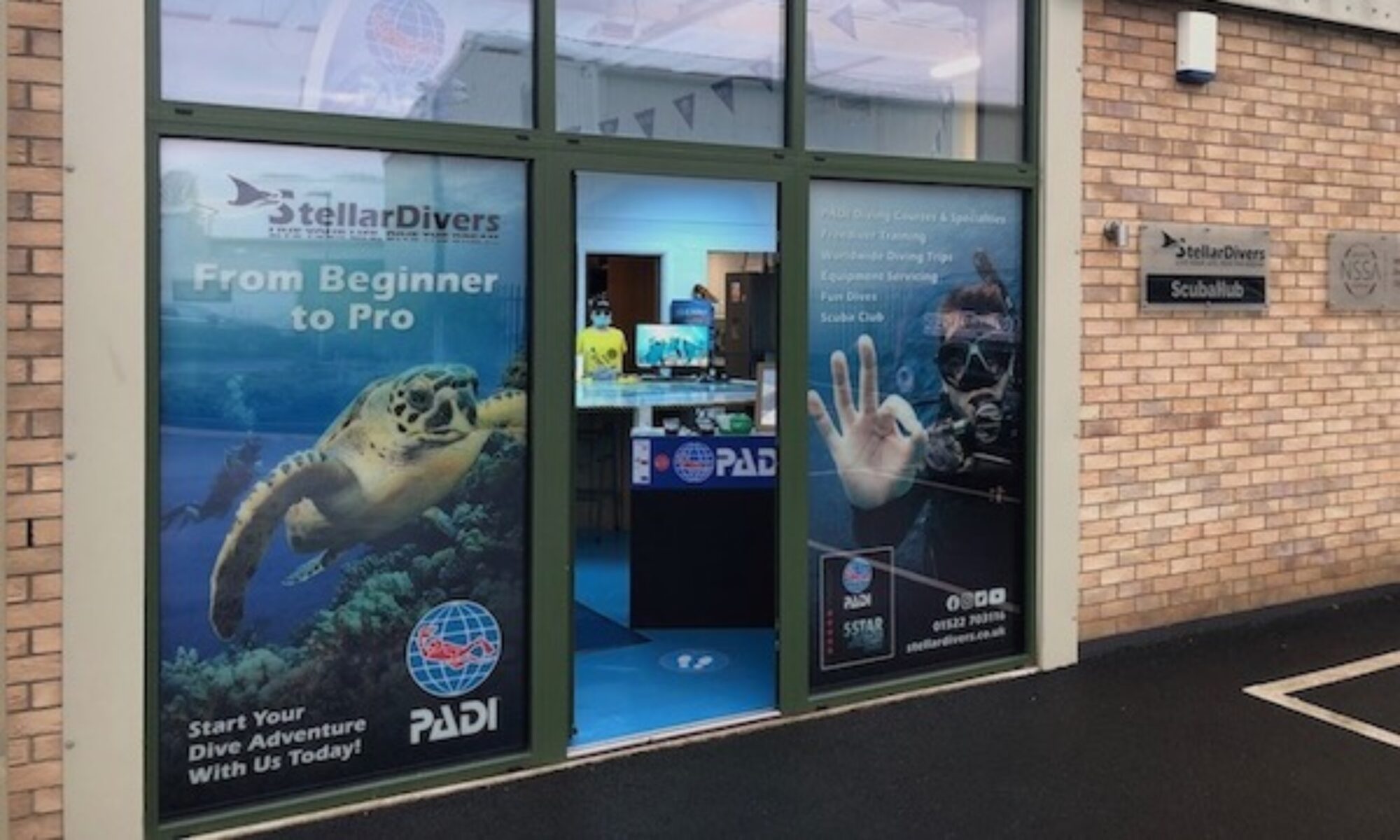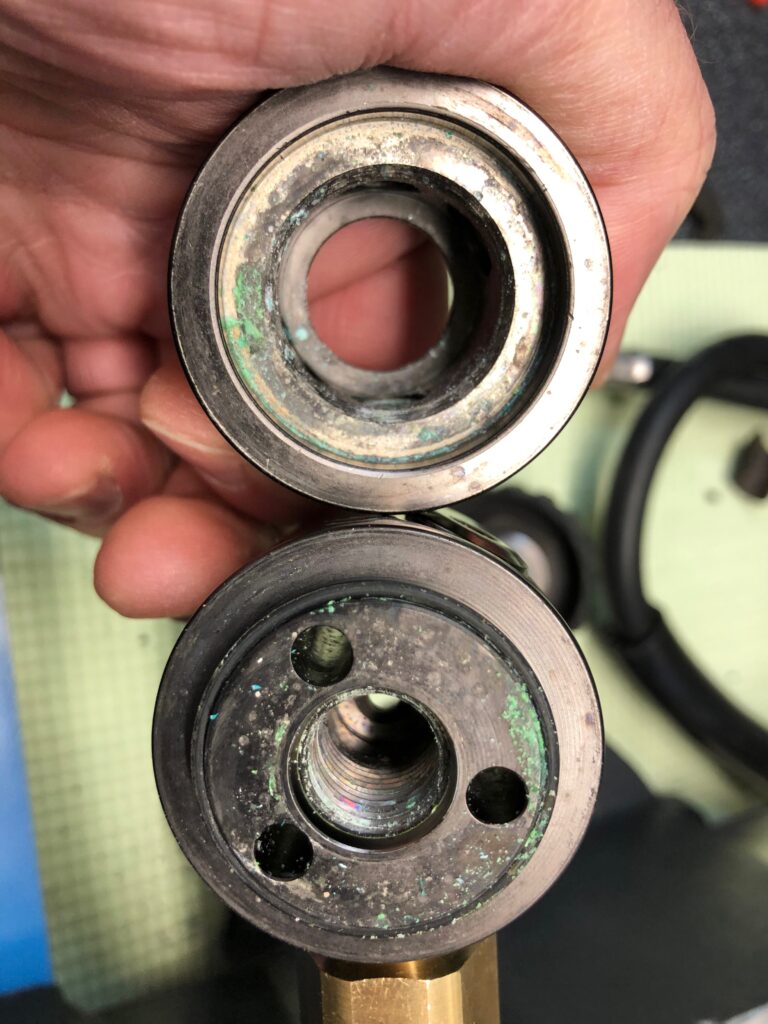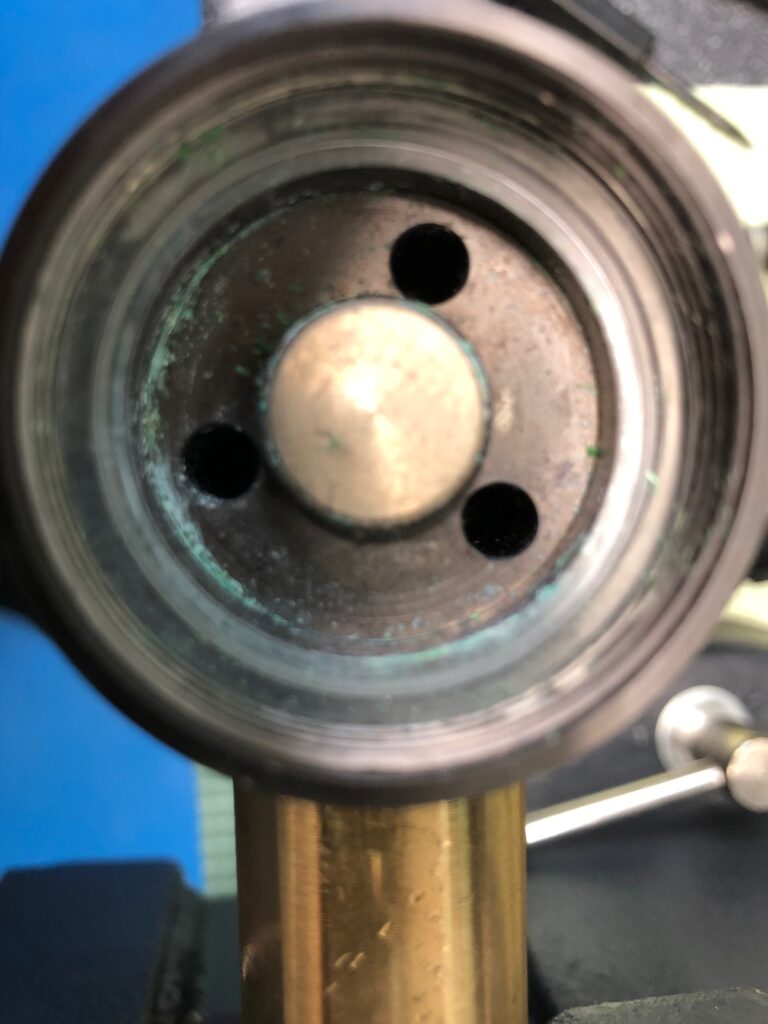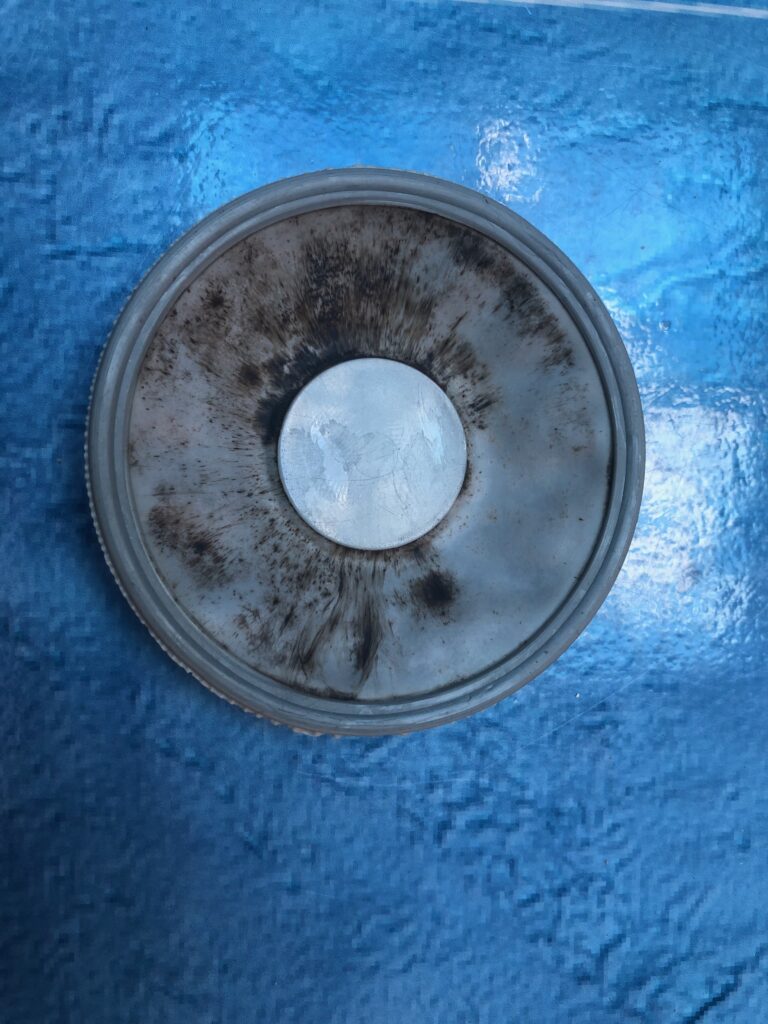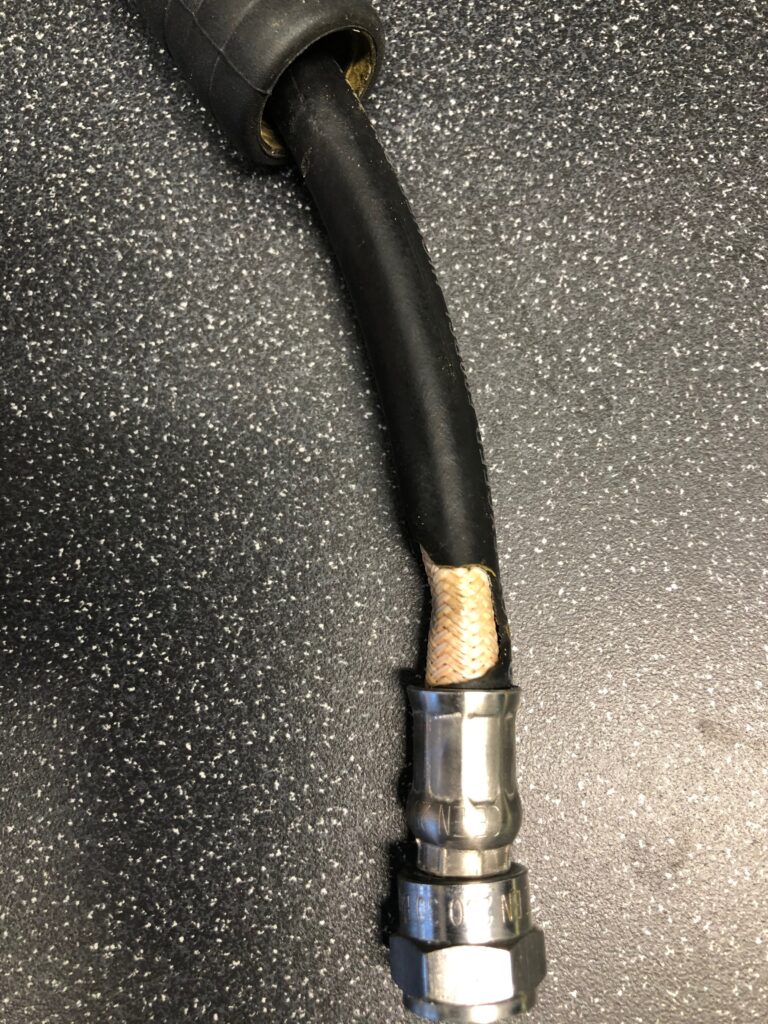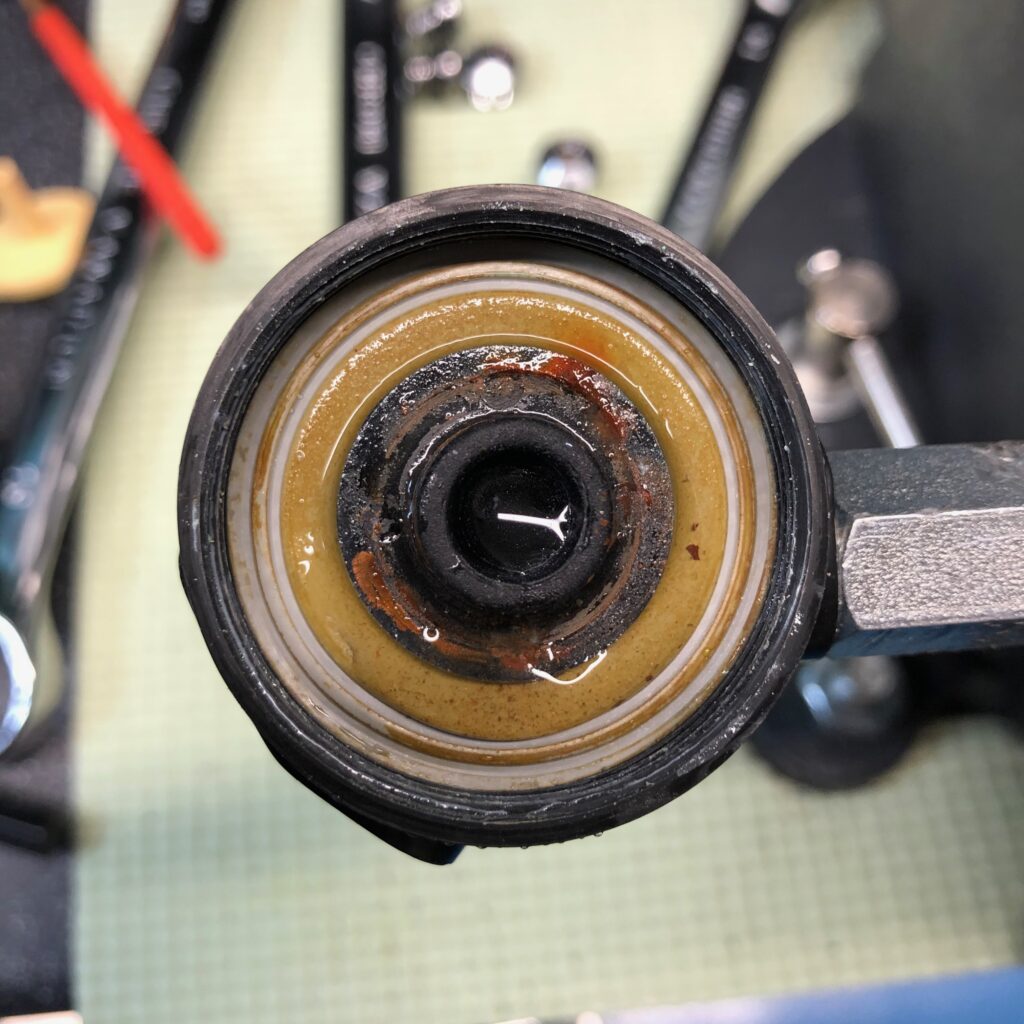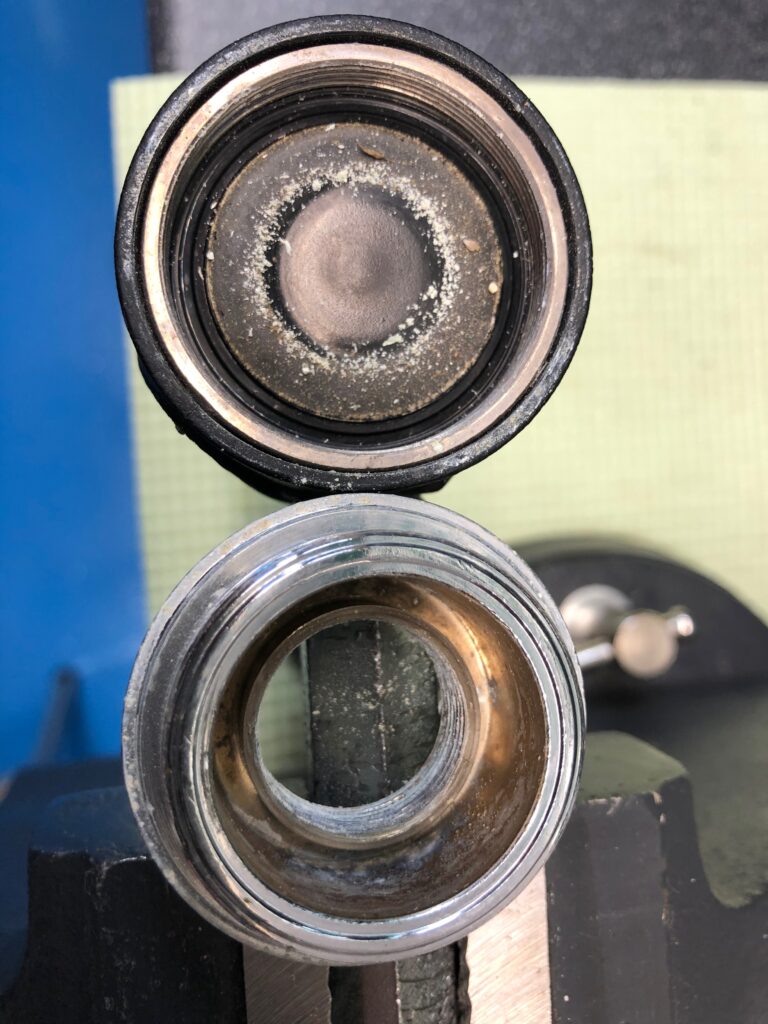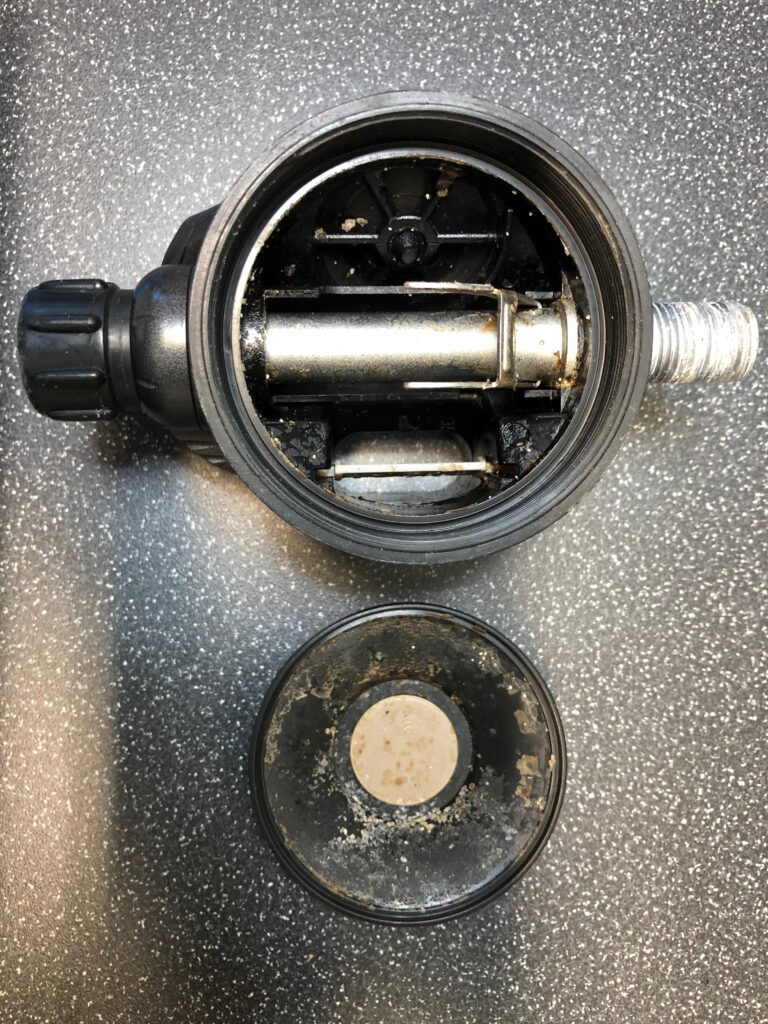Let’s start with regulators:
I don’t think I’ve met anyone who deliberately abuses their precious Scuba Regulators. So you would think it’s odd that we get in so many regulators with serious issues. Take a look at the galley, there’s mould, corrosion, we even found a small snail in a second stage (It was set free unharmed). These problems are generally easy to avoid.
Scuba Regulator Care:
A few basics things done after use can keep your regulators in peak order and prevent malfunctions.
- Pre dive ensure that your regs function perfectly, breathe deeply and slowly from both primary & alternate, check the purge buttons & ensure that there are no leaks from the regulators or hoses.
- At no stage allow your regulators to be dropped on the ground or mistreated, especially when pressurised.
- When you enter cold water do so slowly, allow the regulators to equalise with the water temperature and breathe slowly & deeply.
- Post dive, always immerse your second stages, jacket hoses and spg console in fresh clean warm (30 degrees) water for a couple of minutes and gently agitate to dissolve salt, remove sand, dirt and any aquatic organisms.
- DO NOT press your purge button when rinsing! Without being pressurised water may enter your hose & ultimately your first stage.
- Pull back the hose protectors, make sure your DRY dust cap is on tight and splash your first stage with warm (30 degree) clean water; NEVER immerse in water without being pressurised.
- Shake off excess water, allow to dry naturally and store dry.
- Always get your regulators serviced in line with manufacturer’s instruction, they do differ! For instance MARES regs require a bi-annual service with an annual inspection where as APEKS regs require annual servicing. If in doubt, ask us, we love to chat.
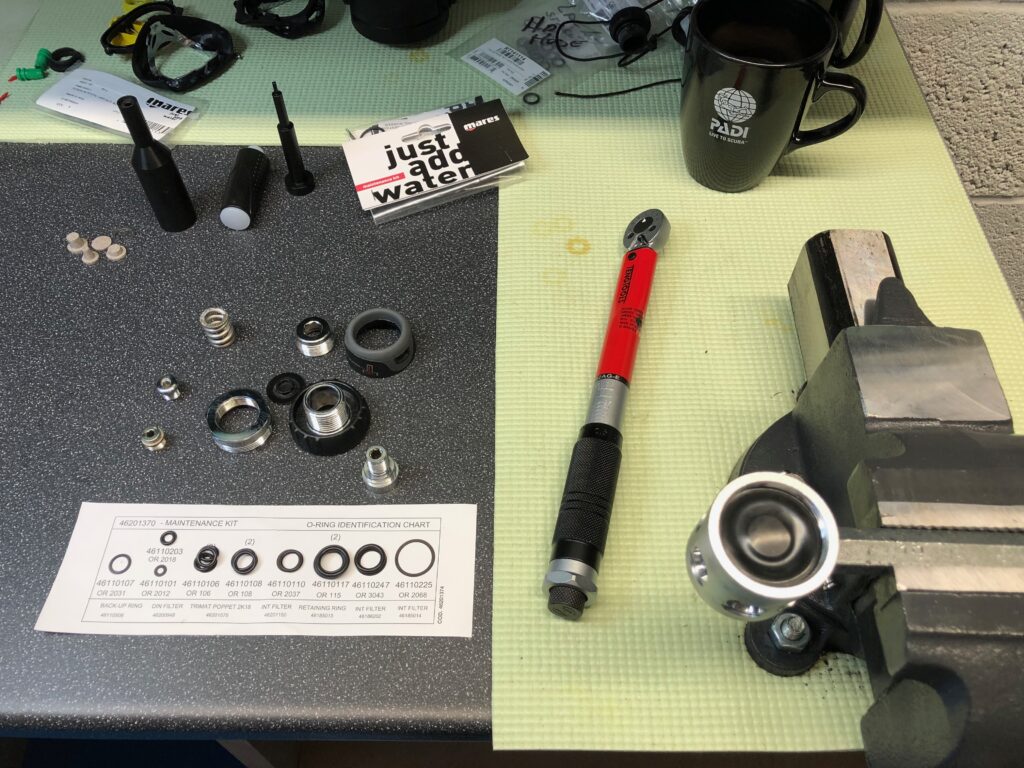
Servicing Regulator Servicing – What’s involved
Ok let’s look at what steps your regs go through after you walk in the door:
- The regulators are visually inspected and checked in using our equipment service and pre service inspection form, any reported faults and observations are recorded at the time also.
- Pre Service Check!!! Your regs firstly get their interstage pressure checked, then the breathing effort of the primary & alternate, this is recorded on the service sheet to reference against.
- Stripping time!!! Your regs are completely stripped, hoses removed and thoroughly checked for signs of corrosion and wear, then all o rings and old parts to be changed are put to one side to be returned to you on collection.
- Cleaning time!!! Your plastic and metal parts are separated, the metal parts are then subject to an ultra sonic clean in a special solution which removes corrosion, contaminants and old grease. The clean will also remove any bacteria, virus or fungus. The plastic parts and diaphragm are then gently washed in warm soapy water, again to remove all contaminates, bacteria, virus, fungus and any old grease.
- Drying time!!! All of your parts are then rinsed in distilled water and set aside to completely dry.
- Checking time!!! All parts are then checked for wear and any signs of degradation, parts not passing the inspection are replaced.
- Rebuilding time!!! The first stage is always hmmmm first!! this is carefully rebuilt in our clean room following strict covid protocols. Any upgrades are added along the way and all parts are torqued to the required settings.
- Testing time!!! The first stage when built is then tested and adjusted to the correct interstage pressure, the first stage is then left for 24 hours pressurised at full working pressure to check for deviations.
- Second Stage rebuild!!! It is then the turn of the second stage/s these are all rebuilt & torqued as required, hoses attached and then with new o rings on the reg hoses, spg, spg hose & jacket hoses the complete regulator is assembled.
- Final tests!!! Once the reg is rebuilt the second stages are then checked for negative pressure leaks & set according to the breathing effort required by the manufacturer. Once we are happy that everything is correct, the regs get their mouthpieces and any bling re attached then they undergo a final immersion test at full working pressure before being disinfected (solutions vary depending on manufacturer requirements) and air dried.
- The happy reunion!!! When you collect your regs you will receive a technician report on the performance of the regs through the service process, this document will also list any additional parts changed, recommendations & observations.
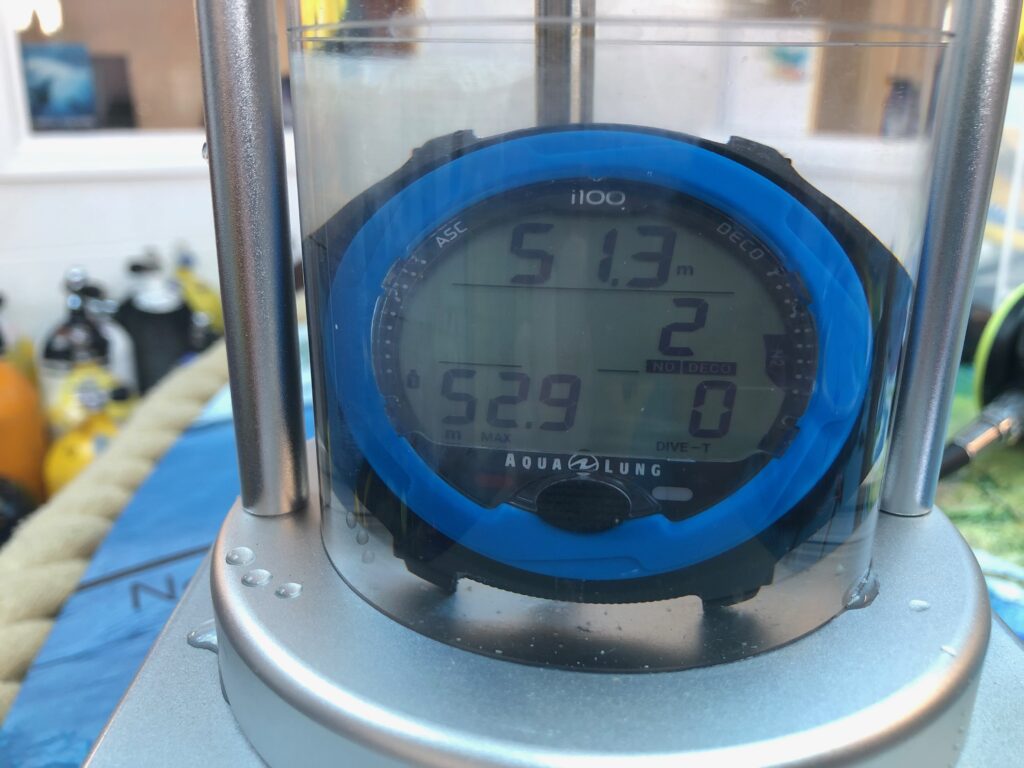
Now let’s look at Dive Computer care:
We rely on these amazing items to keep us safe during a dive, again it only takes a few basic steps post dive to keep them in peak condition:
- Before you dive with the computer switch on and ensure there is enough battery life to do your dives.
- Immediately after you finish the dive rinse the computer thoroughly in clean fresh water.
- If you are doing multiple dives ensure that the computer is stored in a container when not in use (not a sealed container).
- Store out of the sun & away from heat and vibration.
- When you finish your day’s diving again rinse them when possible, immerse the whole computer in clean Luke warm water (30 degrees) for several minutes while gently agitating the computer and moving the strap around. This will dissolve salt particles and and any accumulated dirt.
- Gently shake dry your computer and the put somewhere to dry completely (not on the bar in the sun while you have a social!!!)
- When bone dry store away in a sealed container.
Dive Computer servicing:
Ok let’s look at what steps take place to your computer after you walk in the door:
- The computer is visually inspected and checked in using our equipment service and pre service inspection form, any reported faults and observations are recorded at the time also.
- Your computer is then thoroughly cleaned and dried.
- The computer is opened, inspected, cleaned and the old battery & o’ring discarded.
- A new battery and o’ring are carefully replaced and the case closed.
- The computer is then pressure tested to ensure the depth sensor & computer is functioning correctly.
- Lastly the computer is sanitised and left to dry ahead of collection.
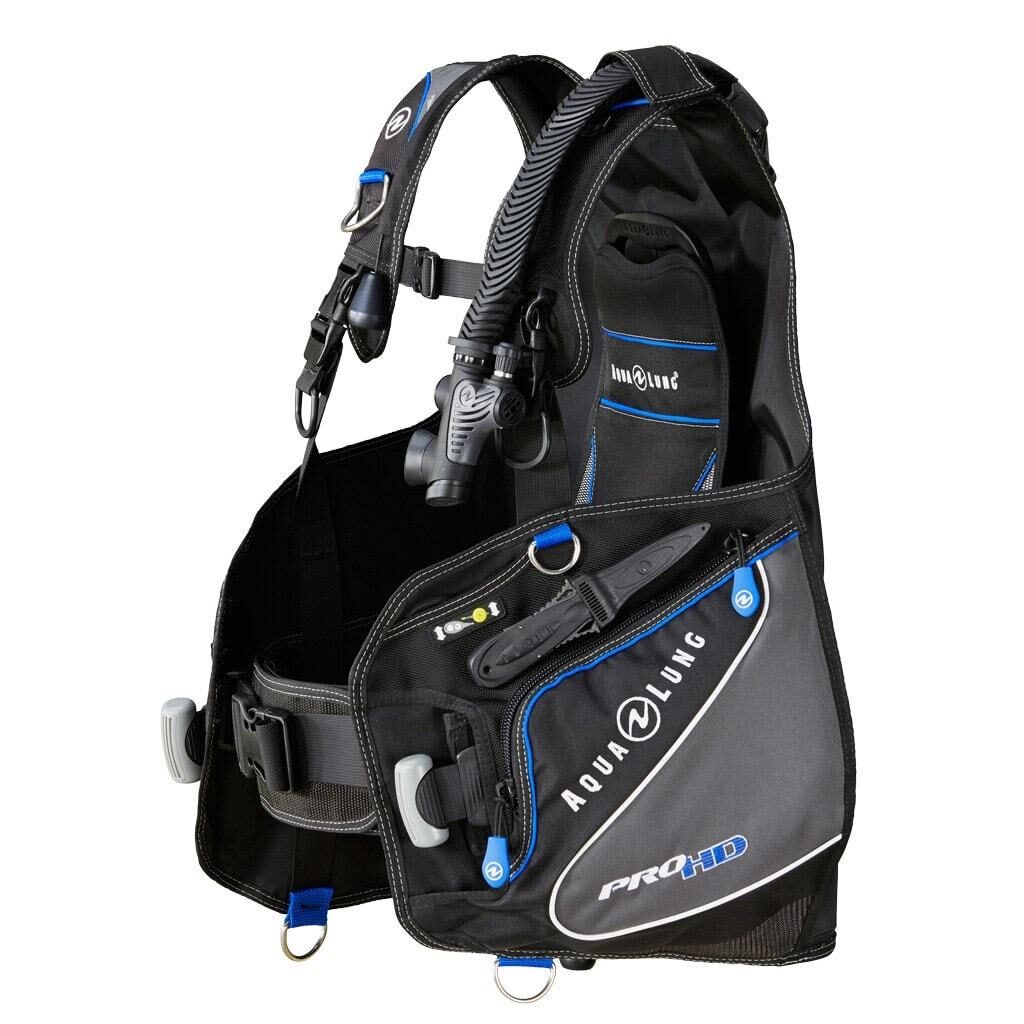
And finally BCD/Wing care:
- Pre dive inflate your BCD and check for leaks and correct functioning of the fill button, LPI button and dumps.
- Post dive (especially in salt water) unscrew a dump and fill with fresh water. If you are not comfortable doing this fill through the LPI (Low Pressure Inflator/s).
- Empty the fresh water using the LPI and the dump valves, also ensure that you press the inflator button and allow water to come out here too. This will ensure any salt or dirt has exited the BCD/Wings bladder.
- If you have left the BCD/Wing un-flushed for a while using a BCD/Wing flush product will help keep it in tip top order.
- Immersing in LUKE warm water (30 degrees) is a good practice, it will allow you to fully rinse the pockets and all metal rings on the BCD/Wing.
BCD/Wing Servicing:
Ok let’s look at what steps take place to your BCD/wing after you walk in the door:
- The beginning; the BCD/wing is visually inspected and checked in using our equipment service and pre service inspection form, any reported faults and observations are recorded at the time also.
- The dumps & LPI are removed from the BCD/wing & then the bladder is rinsed thoroughly.
- Dumps are then inspected & any worn or damaged parts replaced.
- The LPI is then stripped & cleaned, all old o’rings and serviceable parts discarded.
- The LPI is then rebuilt and re attached to the BCD/wing with the dumps.
- The BCD/wing is then tested for leaks with a full pressure immersion test.
- The happy ending; once we are happy, the BCD/wing is sanitised and left to dry ahead of collection.
Customer satisfaction is vital to us so all used parts will be given to you when the service is complete with a final report with any recommendations.
Our technicians will always be available to discuss any questions you have on collection of your equipment.
